
Ingredient
American plums
The Sweet and Tart Delight: Exploring the World of American Plums
American plums are small to medium-sized fruits with a smooth skin that ranges in color from deep purple to red or yellow. They have a juicy flesh that is slightly tart and sweet, with a pleasant aroma. The texture of American plums can vary from firm to soft, depending on their ripeness. These plums are known for their vibrant flavors and are often enjoyed fresh or used in jams, jellies, pies, and sauces.
Origins and history
Native to North America, American plums have a rich history dating back centuries. They were an important food source for Native American tribes, who used them in various culinary preparations and also dried them for winter use. European settlers later discovered these plums and incorporated them into their own cuisines. Today, American plums are widely cultivated across the United States and are enjoyed for their unique taste and versatility.
Nutritional information
American plums are a good source of dietary fiber, vitamin C, and vitamin K. They are also low in calories, with approximately 46 calories per 100 grams.
Allergens
American plums are not known to be common allergens.
How to select
When selecting American plums, look for fruits that are plump, firm, and free from blemishes or bruises. The skin should have a vibrant color and a slight give when gently pressed. Avoid plums that are overly soft or have wrinkled skin, as they may be overripe.
Storage recommendations
To keep American plums fresh, store them in a cool, dry place or in the refrigerator. They can be kept at room temperature for a day or two, but for longer storage, refrigeration is recommended. Plums should be consumed within a week to enjoy them at their best.
How to produce
Amateur gardeners can grow American plum trees by planting young saplings in well-drained soil and providing them with adequate sunlight. These trees require regular watering and pruning to maintain their health and shape.
Preparation tips
Wash American plums thoroughly before using them. They can be enjoyed fresh by simply biting into them or slicing them for salads. For cooking, remove the pit and use the plums in various recipes such as pies, tarts, compotes, or sauces. To enhance their flavor, sprinkle a little lemon juice or cinnamon on sliced plums.
Substitutions
If American plums are not available, you can substitute them with other varieties of plums such as European plums or Japanese plums. Alternatively, you can use other stone fruits like peaches or nectarines, which will provide a similar sweet and tart flavor.
Culinary uses
American plums are versatile and can be used in both sweet and savory dishes. They are commonly used in jams, jellies, pies, and cobblers. They can also be cooked down into sauces or compotes to accompany meats or used as a topping for desserts. Additionally, American plums can be dried to make prunes or used to infuse flavor into beverages like teas or cocktails.
Availability
American plums are commonly available in the United States, particularly in regions where they are cultivated, such as the Midwest and Northeast. They can also be found in farmers markets and specialty grocery stores.
More ingredients from this category » Browse all

Japanese plums
The Delicate Delights of Ume: Unveiling the World of Japanese Plums
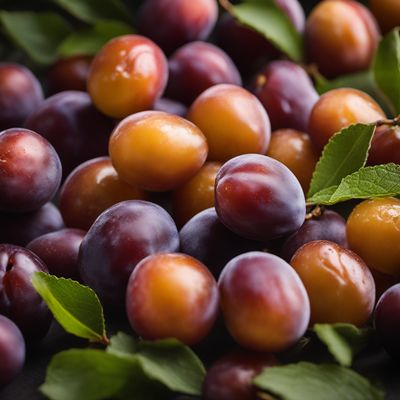
Mirabelles
The Golden Gems of Summer

Klamath plums
The Jewel of Klamath

Prunus Nadia®
The Exquisite Fusion of Sweetness and Tartness: Prunus Nadia®

Chinese jujubes
The Ancient Fruit: Chinese Jujubes
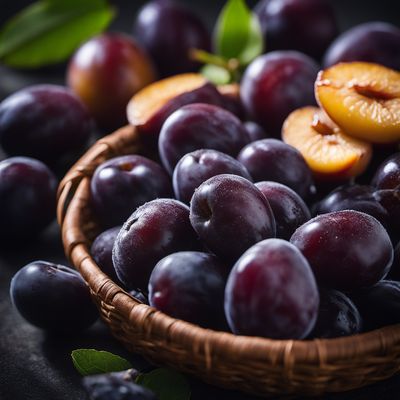
Plums
The Juicy Gems

Plumcots
The Perfect Blend: Exploring the Unique Delights of Plumcots
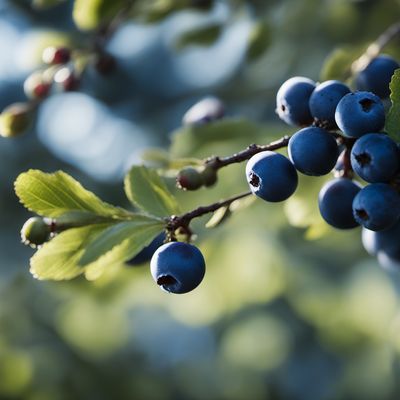
Sloes
The Bitter-Sweet Berry
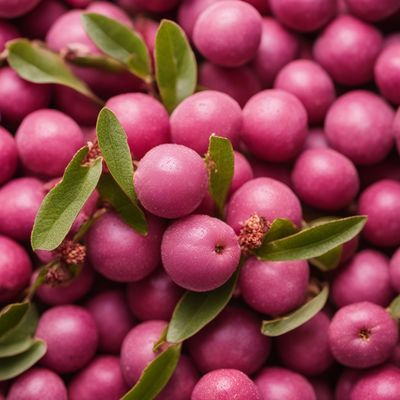
Chickasaw plums
The Sweet Gems of the South
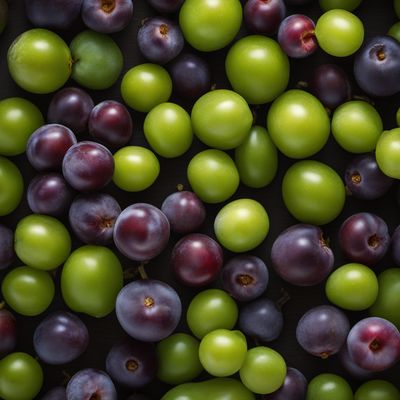
Gages
The Sweet and Succulent Delight: Exploring the World of Gages

Damsons
The Prized Gems of the Plum Family

Cherry plums
The Sweet and Tangy Delight: Exploring the World of Cherry Plums